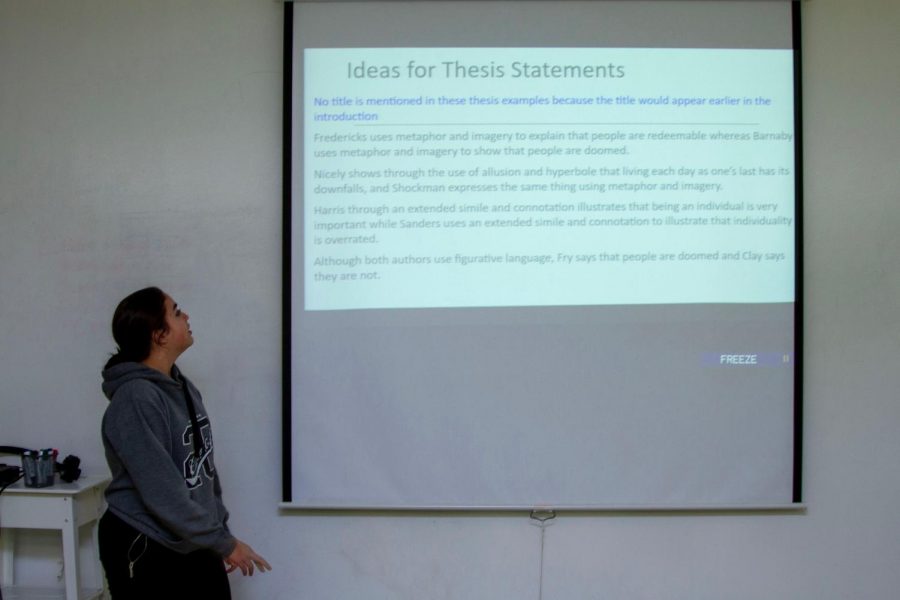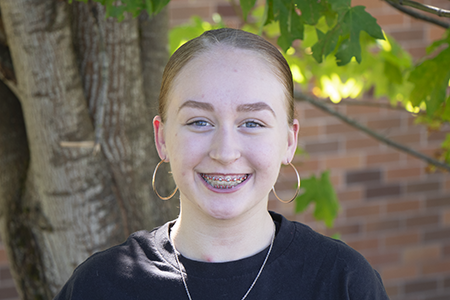In-Class Presentations Should Be Abolished
For students who struggle with anxiety, class presentations only add to the stress.
December 11, 2019
The following article includes tweets containing explicit content.
For many high school students, in-class presentations are just a part of the curriculum for most classes. The usual sweaty hands and racing heartbeat are all symptoms of a nervous presenter, but for the 7% of students with serious anxiety disorders it could induce a panic attack and mental distress.
Abolishing in-class presentations has been a major topic of discussion for a couple of years now. Many people think that Generation Z, the generation born between 1996 and 2010, is too sheltered, and a criticism that is often directed at this generation is that “you do not face your fears by running from them.”
Many students with diagnosed anxiety have spoken out on public platforms, such as Twitter, to voice their opinions. One teen named Leen, who goes by the username @insaneasylums, spoke out on Twitter about her personal experiences and concerns on the situation. In a tweet that has received more than 350,000 likes, she said, “I just wanted to come on here and say that if you know nothing about anxiety, don’t reply with ignorant bullshit. If someone is too anxious to present in front of the class, they should be given a choice not to. Mental health is important. It isn’t cured by ‘facing your fear.’”
| ̄ ̄ ̄ ̄ ̄ ̄ ̄ ̄ ̄ ̄ ̄|
stop forcing students
to present in front of the
class and give them a
choice not to|___________|
\ (•◡•) /
\ /
—
| |— leen (@insaneasyIums) September 8, 2018
When presenting many students tend to be more focused on the opinions of their peers rather than the information that they are supposed to be relaying and learning about. This would be unfair to those who struggle with an anxiety disorder and are bound to under-perform and receive a lower grade compared to their classmates.
Anxiety is the most common mental illness in the United States, which affects 40 million adults. Despite the severity of this disorder many people who have it are not being recognized. This fact alone should set in motion steps to remove the requirement of in-class presentations.
There are many circumstances where students receive alternative options in school that allow them to succeed like their classmates. There are different educational options like Individualized Educational Plans, or 504s, which offer support and services for students who require accommodations in their learning, so why are these plans offered for some with anxiety, but not all?
It is most likely due to the fact that people often cannot see this disorder. When someone has a learning disability their test scores reflect that, but if you have social anxiety it may only show up in presentations or public speaking where students have tried to make excuses to get out of these such assignments.
Teachers, please stop forcing students to present in front of the class & raise their hand in exchange for a good grade. Anxiety is real.
— amberlicious. (@DAMNBlEBERS) January 30, 2017
Students want more options. For instance, students have added to the debate “that every student has unique strengths and abilities and that they should be allowed to present their work in ways that speak to those strengths.”
This debate has brought up the question of how does an educator distinguish between those with an actual diagnosed anxiety disorder and those who might just want to get out of the assignment? Many students have spoken out and stated that there is a big difference between nervousness and anxiety.
Being a teen in 2019 is more demanding than ever. Teens are put under copious amounts of stress with outside of school activities, higher academic standards, and more hours of homework than past generations.
High schoolers are asked to get up as early or earlier than adults when teens are supposed to get more sleep than the average adult. Then we go to school for 7 hours a day, go to sports, and finish the day with an average of 3 and a half hours of homework. Most teens do not get the sleep they need. One study showed that only 15% of teens reported sleeping 8 1/2 hours of sleep on school nights.
Despite many students speaking out there are still some that are still not convinced. Some have responded to these claims and said that anxiety is something you can grow out of if you get out of your comfort zone enough times.
we need to stop preaching to get rid of public speaking and we need to start preaching for better mental health support and more accessibility alternatives for students who are unable to complete presentations/classwork/etc due to health reasons
— jagoopy (@jagooopy) September 10, 2018
In order for changes to occur within school systems, students must advocate for the changes they wish to see in order to receive the outcome they want. It is those who are affected by an anxiety disorder that must educate people that see anxiety as a feeling rather than an illness. These facts continue to provide evidence and reason for school systems to remove in-class presentations as a requirement for all students.






